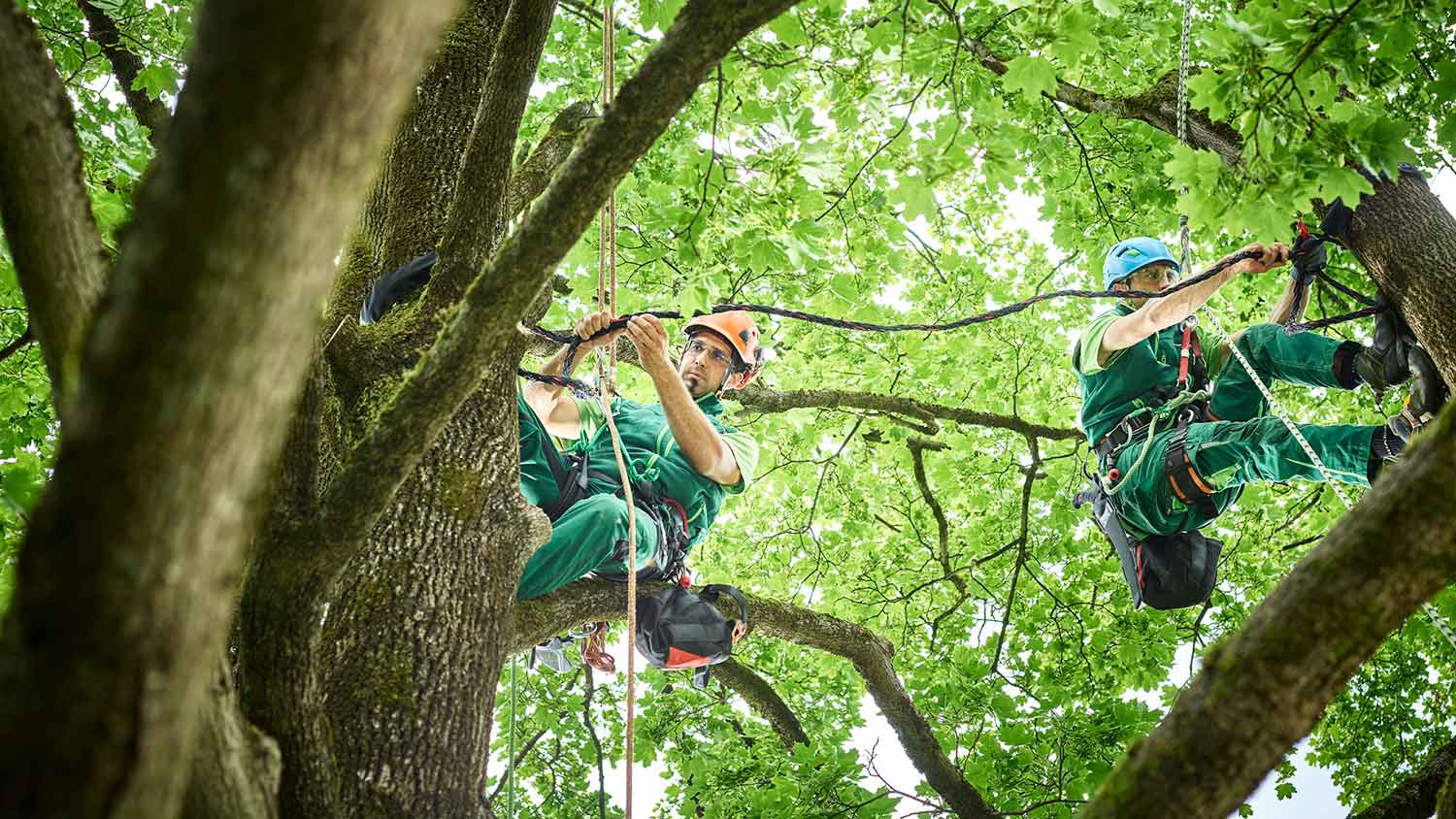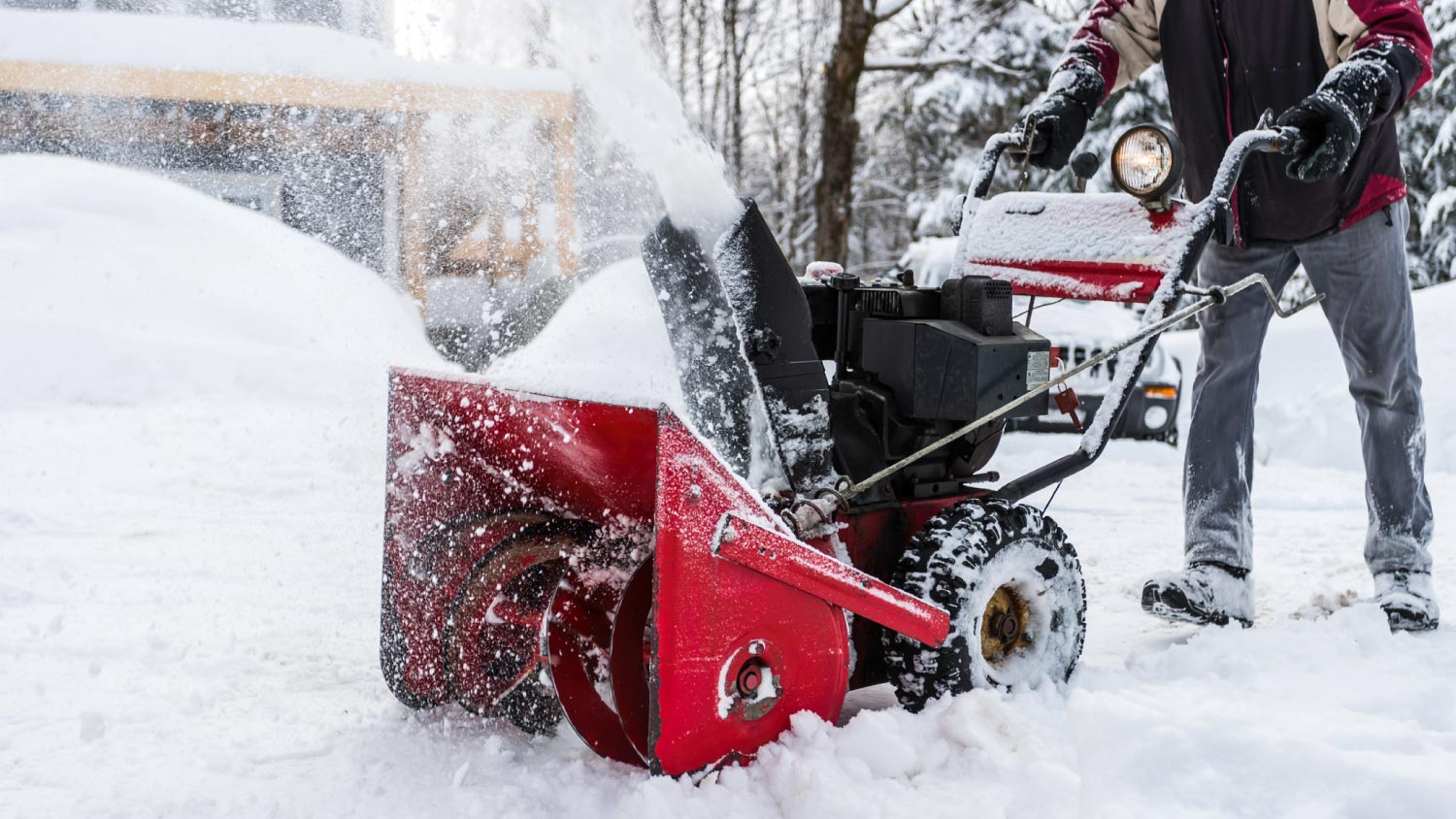
Discover the cost to install snow guards. Learn about average prices, key cost factors, and tips to save on your snow guard installation project.
After a thaw, you might want to grab your rake and shovel


Professional lawn care costs between $100 and $500, depending on what needs to be done.
This white mold is notoriously hard to get rid of, so calling a professional may be the most effective way to remove it.
Using the wrong treatments or techniques can damage your lawn and expose you to mold spores that can irritate your skin or lungs.
The pros can identify causes of snow mold, like overwatering or leaving leaves on the ground too long.
The professionals know the right treatment course for your climate and type of turf.
Snow mold, the white or pinkish mold that can grow on a lawn, isn’t very hard to get rid of. Learning how to get rid of snow mold on grass is an essential way to restore the health of your lawn.
In normal circumstances, snow mold is caused by excessive watering during damp periods but, more often than not, it grows in its preferred environment—under a blanket of snow. Learn how to remove this pesky mold and when to hire a professional for help.
Snow mold is a fungus categorized as a “turf disease,” meaning it affects turf (ground cover, also known as grass). The mold is usually discovered after a heavy layer of snow melts and instead of a uniform lawn, circular or irregular patches are dispersed over the grass. While snow mold grows on grass and can be white, it isn’t the same as the white mold you see on plants.
Both white and pink snow mold is more commonly seen in locations with long winters where snow covers the grass for an extended amount of time. As the snow melts, it continues to moisturize the grass while still providing a layer of protection against the sun and other elements. This is the perfect environment for snow mold to grow.
Getting rid of snow mold isn’t difficult. However, mold has the nasty habit of growing even if you’ve done everything right. The good news: it’s super easy to get rid of.
Mold, not just snow mold, needs pockets of relatively undisturbed moisture to grow. That’s why you often see mold in cabinets, under floorboards, and in other high-humidity environments. Snow mold is unique in that the medium it’s growing on can be handled roughly (unlike your cabinetry).
If you see snow mold on your lawn, get a rake and a shovel. As long as you’re expecting better weather, spread the mold out as much as you can. What you’re trying to do is break up the mold systems and introduce as much air into the mold as possible. This dries it out, thus killing it.

If you’ve already raked your yard and broken up any living mold, you can increase your chance of success by fertilizing your lawn. Since snow mold doesn’t kill the root of your grass, you can jumpstart existing roots. The new grass should come up healthy and strong, and can potentially displace any remaining snow mold.
This should be reserved for only the toughest cases where conventional methods won’t work. It’s very rare that you will need your lawn sprayed with fungicide, but it does happen. You really shouldn’t be messing with these chemicals yourself, so hire a local lawn care professional to handle the job.
The absolute best course of action is to prevent snow mold altogether. There are certain steps that may not guarantee it won’t crop up, but will seriously increase your chances of seeing a pristine lawn once the snow melts.
Snow mold likes the confusing web that grass creates, as it functions like a cage, trapping moisture. For this reason, it’s recommended that you mow your lawn down to about 2 inches before the first anticipated snowfall.

Mold likes the dark. Sun exposure contains UV rays, which are harmful to mold. This is why snow mold is seen more often in yards that are surrounded by trees, rather than those that receive direct sunlight for hours. If you have snow mold issues year after year, you may want to consider trimming the tree branches that cast shade on your lawn.
Snow mold occurs usually because a layer of snow is between the wet earth and the air. This same concept can be applied to more than just snow, so before winter make sure there are no loose leaves, branches, wheelbarrows, pieces of wood, tarps, or anything else that could create a moisture barrier.
Certain grasses are much hardier than others. Fescue is a known variety that is more resistant to fungal growth. Another popular mold-resistant strain is Kentucky bluegrass. Unless there is a specific reason to choose a different strain—such as homeowner association (HOA) bylaws—go with the hardiest grass type.
Dormant lawns are more resistant to mold growth because they grow less and take up less water, which means the grass is drier. Dormant grass also transpires less, feeding less moisture into the immediate environment which in the case of snow mold, is the barrier between the snow and grass.
This preventative measure is something you can do once it has already started to snow. A snow plow may pile snow high at the edge of your yard, as can a shovel when shoveling your driveway and walkway. Snow can also pile up under your roof and along the sides of your home. Use a shovel to spread the snow around, making sure there aren’t any tall piles that could take longer to melt, and thus, increasing the time snow mold can grow.
Lawn care professionals charge between $25 and $60 per hour. If you need your lawn reseeded, or replanted, or if you use a lawn care company, give them a call. A lawn care pro can help clean up any large patches of damaged grass.
If you don’t have extensive damage, you can DIY snow mold removal or repairs. Materials, such as new seed and fertilizer, aren’t expensive, and lawn care has the rightful reputation of mental benefit. If you don’t need professional help, you should try and DIY any snow mold issues.
From average costs to expert advice, get all the answers you need to get your job done.

Discover the cost to install snow guards. Learn about average prices, key cost factors, and tips to save on your snow guard installation project.

Get the latest snow removal cost estimates, including average prices, key cost factors, and tips to help homeowners budget for safe, efficient snow removal.

What’s the difference between a three-stage vs two-stage snow blower and which is better? Learn which option is best for your snow removal needs.

If your winters pile on the snow, you need the right tool for the job. Here are all the types of snow removal equipment at your disposal, from handheld to high-tech options.

Knowing what to put on an icy sidewalk is just part of the battle when the temperature drops. Here are more tips for an ice-free walk.

Snow blowers and snow plows are both excellent snow removal tools, but each has pros and cons. Learn the key differences between a snow blower vs. plow.